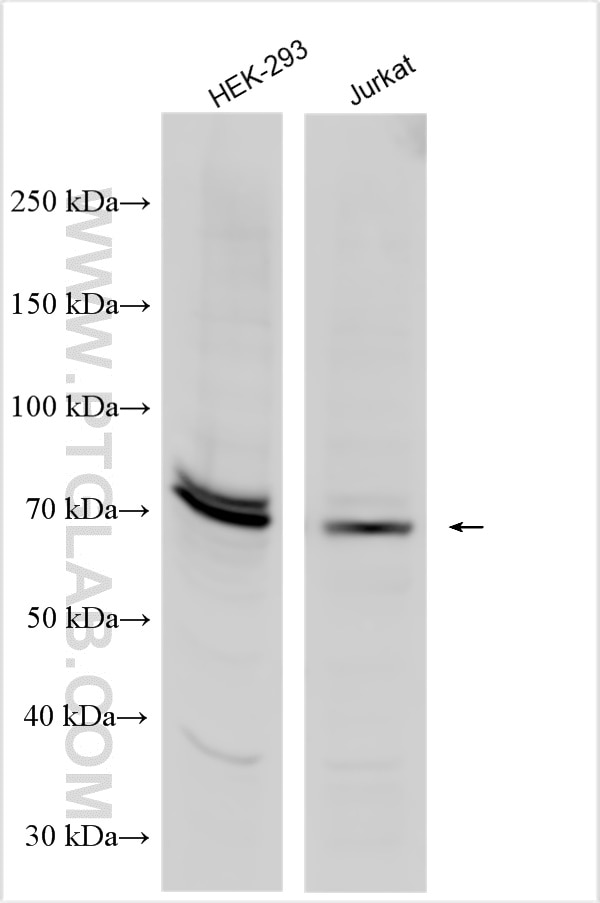Tested Applications
| Positive WB detected in | HEK-293 cells, Jurkat cells |
Recommended dilution
| Application | Dilution |
|---|---|
| Western Blot (WB) | WB : 1:500-1:1000 |
| It is recommended that this reagent should be titrated in each testing system to obtain optimal results. | |
| Sample-dependent, Check data in validation data gallery. | |
Product Information
30082-1-AP targets FOXC1 in WB, ELISA applications and shows reactivity with human samples.
| Tested Reactivity | human |
| Host / Isotype | Rabbit / IgG |
| Class | Polyclonal |
| Type | Antibody |
| Immunogen | FOXC1 fusion protein Ag32531 Predict reactive species |
| Full Name | forkhead box C1 |
| Calculated Molecular Weight | 57kd |
| Observed Molecular Weight | 70 kDa |
| GenBank Accession Number | NM_001453.3 |
| Gene Symbol | FOXC1 |
| Gene ID (NCBI) | 2296 |
| RRID | AB_2935512 |
| Conjugate | Unconjugated |
| Form | Liquid |
| Purification Method | Antigen affinity purification |
| UNIPROT ID | Q12948 |
| Storage Buffer | PBS with 0.02% sodium azide and 50% glycerol, pH 7.3. |
| Storage Conditions | Store at -20°C. Stable for one year after shipment. Aliquoting is unnecessary for -20oC storage. 20ul sizes contain 0.1% BSA. |
Background Information
FOXC1, also named as FKHL7 and FREAC3, binding of FREAC-3 and FREAC-4 to their cognate sites results in bending of the DNA at an angle of 80-90 degrees. Defects in FOXC1 are the cause of Axenfeld-Rieger syndrome type 3 (RIEG3). Defects in FOXC1 are the cause of iridogoniodysgenesis anomaly (IGDA). Defects in FOXC1 are a cause of Peters anomaly. This antibody is specific to FOXC1. Phosphorylation modification of Foxc1 protein may be responsible for the larger molecular weight of detection compared with theoretical molecular weight (PMID:27708239;16403239).
Protocols
| Product Specific Protocols | |
|---|---|
| WB protocol for FOXC1 antibody 30082-1-AP | Download protocol |
| Standard Protocols | |
|---|---|
| Click here to view our Standard Protocols |



